If you’ve ever heard anything about Fiji it probably had to do with beautiful sea and beaches and altogether a paradise-like destination for holiday. You won’t be disappointed in reality when you finally step foot on Fijian soil. Fiji offers hotels and resorts in beautiful locations, swimming, snorkeling and diving in azure blue sea with abundant sea life, as well as inland hikes and exploring the local culture.
Fiji is situated in the same area as the islands of Tonga, Samoa or Vanuatu, and is the most visited one out of them. Because of that, it can offer a higher standard for foreign tourists, for example, in the accommodation options. The local currency is the Fijian Dollar. The main island of Fiji is called Viti Levu. The capital, Suva, is situated in the southeast of the island, and Nadi, where the international airport is, can be found in the west. Most of the tourists fly to Nadi to get to the resorts in the Mamanuca and Yasawa Islands near the west coast. If you’re aiming for a beach holiday, we definitely recommend the Mamanucas and Yasawas, as the beaches and the sea are more beautiful there than at Viti Levu.
When to visit
The temperatures in Fiji are pleasant enough throughout the year, however, if you want to avoid the cyclone season, don’t go between November and April. In case you’re planning to visit other countries in the area, it’s good to make a plan according to that as well. For example, if you want to experience seeing or swimming with whales in Tonga, you should plan your stay between June and October.
How to get to Fiji

It’s fairly easy to get to Fiji, as Fiji Airways are a big company with a lot of international flights all around the world, and Nadi is a large and important hub in the region.
If you’re in New Zealand you can take advantage of a direct flight with Fiji Airways, Air New Zealand or Qantas. The flights take around three hours. The direct flights from Australia are run by Fiji Airways, Jetstar, Qantas or Virgin and they take around four to five hours.
It takes a long time to get to Fiji from Europe, obviously, however, Korean Air and Air New Zealand have only one stop on the way from big European airports while Emirates and Qantas have two stops.
It’s also very easy to get to Fiji from other islands in the area, from Samoa, Tonga or Vanuatu. Fiji Airways provides flights to and from all of these islands. You can have a look at the destinations. Real Tonga, a small Tongan company, offers flights from Tonga to Fiji, as well.
How to travel around Fiji
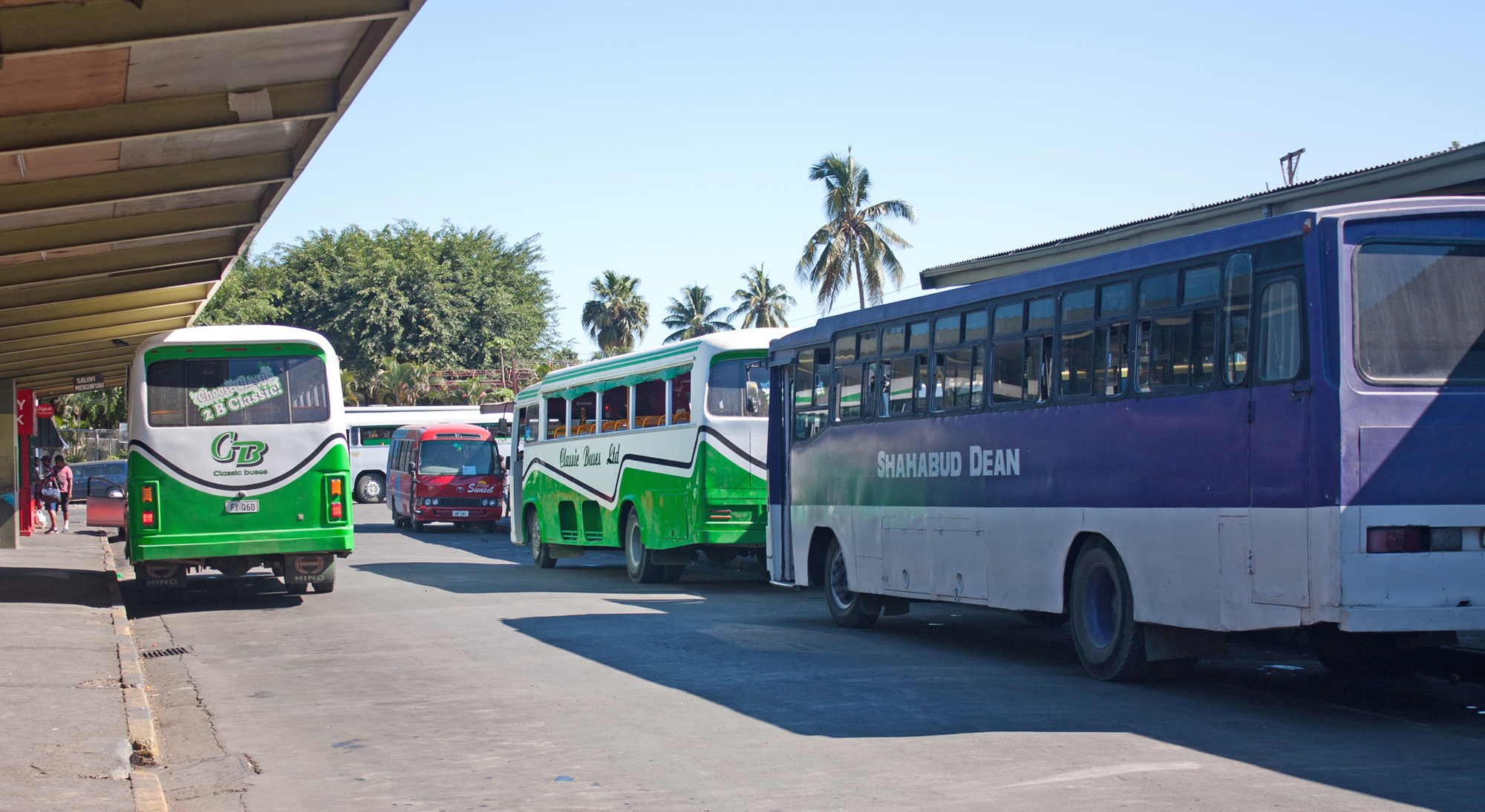
The connection between the islands of Fiji
Fiji Airways will take you from the main island, Viti Levu, to the second biggest island, Vanua Levu, leaving Nadi or Suva and arriving at Labasa or Savusavu. Another option is to combine a bus and a ferry with Fiji Searoad Service. You can get on a bus in Nadi or Suva, then use a ferry and then use a bus again to Savusavu. This form of transport will make your journey much longer and arguably less comfortable, however, it is considerably cheaper than flights. In a similar way, you can get to other islands using services such as Interlink Shipping Line Ltd., Grace Ferry (between Vanua Levu and Taveuni), Consort Shipping or Patterson Brothers Shipping.
As far as Mamanuca and Yasawa islands are concerned, some of the resorts on the islands offer their own form of transportation leaving from Port Denarau, but it isn’t always the cheapest option. It’s better to use one of the private ferries or water taxis. There are several ferry companies, and so it’s good to gather information on how to get to your accommodation from the resort. The most popular choice of a ferry travel company is the Awesome Adventures Fiji, which goes both to Mamanucas and Yasawas. The ferries are quick, modern and comfortable. The prices vary according to your destination. You can also purchase Bula Pass, which enables you to island-hop for cheaper. The prices start at 187 Euros for five days.
Viti Levu transportation
There are two types of buses in Viti Levu – local and express buses. Both are pretty cheap, however, the express buses are more comfortable and don’t stop at as many bus stops as the local ones. For the local buses, you need a prepaid card, which can be bought the first thing at the airport, but you can also buy them on the bus. The local buses run until about 6 pm.
Express buses run between Nadi and Suva and stop at some of the town centers. In Nadi, you can buy the bus tickets at the bus station. It’s also possible to buy the tickets on the bus. You can find the timetables of some of the express buses on the internet, for example, Sunbeam, Coral Sun or Pacific Express. Don’t expect the buses to be always on time.
What to do, visit and see
The most obvious reason for going to Fiji is to have a calm and relaxed vacation. As we mentioned before, the majority of the tourists go straight to Mamanuca and Yasawa islands and enjoy the beaches as well as the snorkeling on the reefs. Here we also cover the activities you can do at Viti Levu, though.
Mamanuca and Yasawa
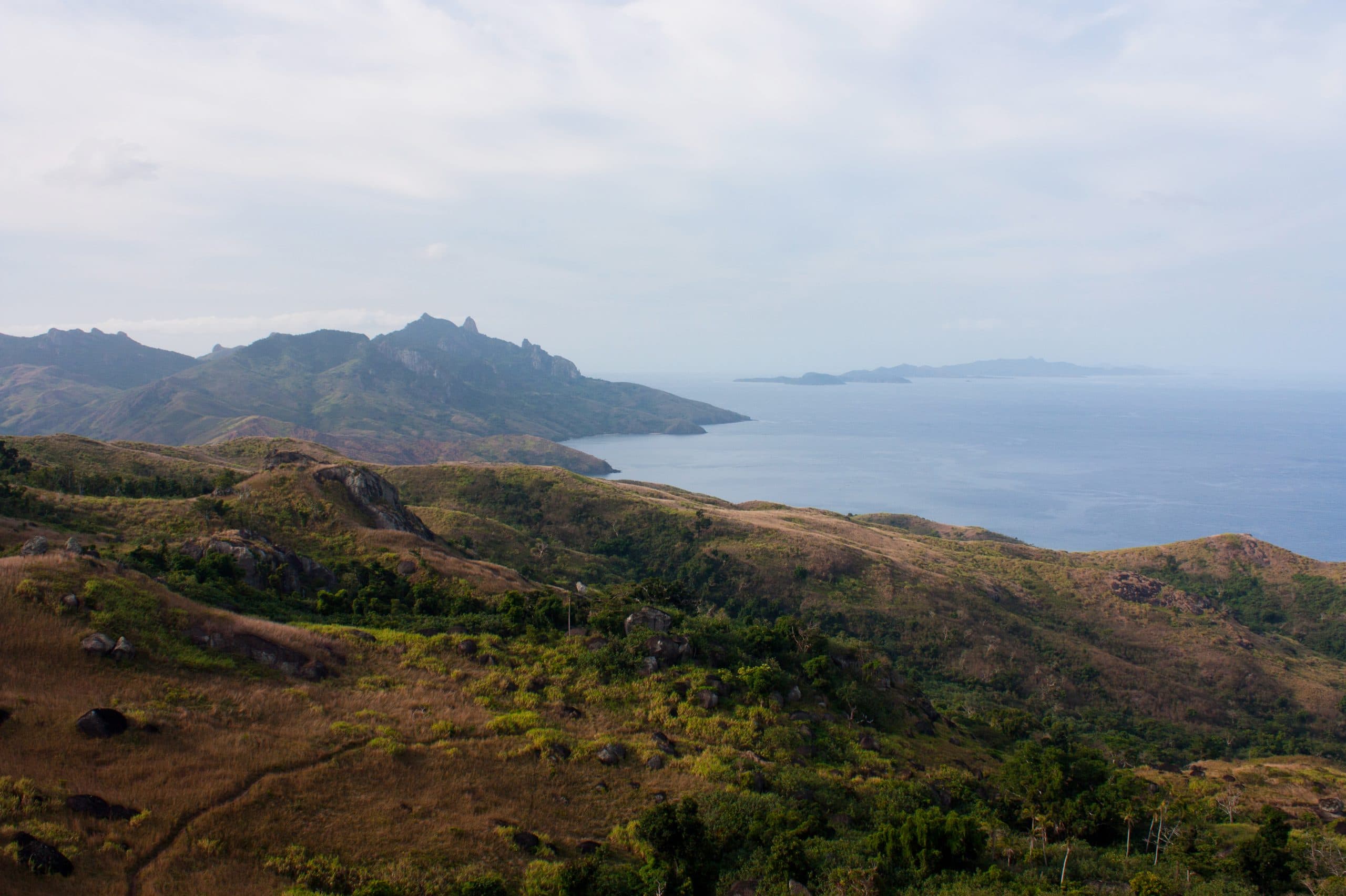
Most of the resorts offer various water activities, so it’s recommended to find out before booking. The water activities can include snorkeling, diving, fishing, swimming with sharks, kayaking, paddle boarding or even swimming with Manta Rays at Mantaray Island Resort. No one is able to guarantee you upfront there will be Mantas in the area when you arrive, though. The season is June to October. For those not interested in water activities, there are often other activities, such as various trips, cooking lessons, beading, weaving, and so on. The resorts also often organize cultural evenings with songs and dances, as well as kava nights.
You can arrange a one-day or multiple-day trip with South Sea Cruises and discover different islands and snorkelling spots. Fiji is a great place for diving, whether you’re a beginner or an experienced diver, as the reef is very diverse. There are also options for diving with sharks.
If you’re an experienced surfer, you’ll enjoy the world-class surfing in Fiji for sure. Most of the famous Fijian surf spots are suitable for experienced surfers only, as they are situated on reefs and often require a boat to get to. The majority of the best surf spots in Fiji are located in the Mamanuca island group. The most famous include Cloudbreak, Restaurants or Swimming Pools.
If you get tired of all those water activities or you just feel like doing something different, you can go on a scenic flight with one of the companies here or here. Because of the beautiful location, skydiving is also definitely recommended. Although not renowned for hiking, some of the Yasawa and Mamanuca islands are quite hilly and offer short peak climbs with refreshing views.
Viti Levu
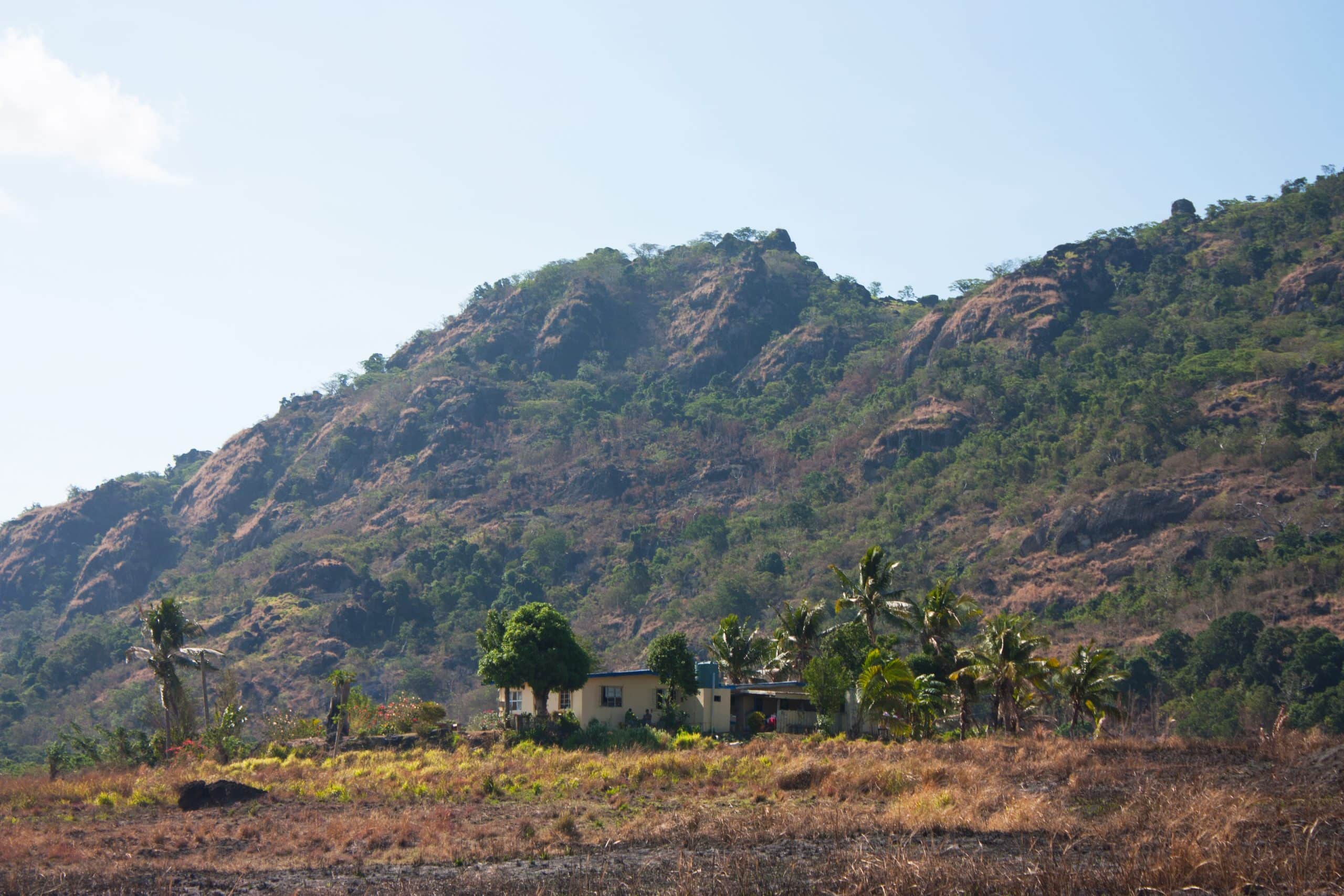
Nadi
Probably the most interesting landmark in Nadi is the largest Hindu temple in the southern hemisphere, Sri Siva Subramaniya. You can visit the temple easily enough. There’s a small fee and you need to cover your shoulders and legs. Other than that, we can’t say we recommend spending too much time in Nadi. We didn’t like the town much, it’s noisy, busy, chaotic and there’s a lot of traffic. Nadi is an important hub, and so you might end up in town one way or another, maybe just passing through. You might be looking for something to eat, for example. A large part of Nadi’s population is Indian, and so the restaurant options are quite limited. We like Indian food but can’t say there are many Indian food options in the downtown that look tasty. If you don’t like Indian food, it’s almost impossible to find anything else to eat.
Lucky enough there’s a restaurant called Grace Road Kitchen which offers Korean and Asian food, is not too expensive, and you can enjoy tasty food at a place with a nice atmosphere. The restaurant produces its own vegetables and rice directly in Fiji. It is number one on Tripadvisor in Nadi.
Rather than staying in Nadi, we propose exploring the surroundings. Sabeto Hot Springs and Mud Pool are not far away. Same goes for the Garden of the Sleeping Giant. The easiest option of how to get to the Garden is to take a taxi all the way from Nadi. The cheaper option involves a combination of a local bus from Nadi and a short taxi ride or a bit of walking. The bus stops on the main road near the turnoff, which leads to the Garden. From there you have to take a taxi for FJD 5 or walk for around 30 minutes.
Suva
We liked Suva a little bit more than Nadi. Maybe it was because of the park and a promenade in the downtown, or just altogether a better vibe the town had. There’s also a larger and more varied selection of eat-out options including Fijian and Chinese food. You’ll find various markets and supermarkets in the town, as well. In case you want to learn a bit more about Fiji, the Fijian Museum is worth a visit. If you want to be a bit more active, you can visit the Colo-i-Suva Forest Park just outside of Suva.
Sigatoka
Sigatoka is a town in the middle of the popular tourist area called the Coral Coast. As the name suggests the area is famous for its beaches. Enjoy, for example, one of the most beautiful beaches in the area, Natadola Beach. You can have a go at surfing at Natadola, as the conditions are more suitable for beginners. Not far away from the town, you can visit the sand dunes, which reach around 20 m on average. Also near Sigatoka, Ecotrax Fiji
is an interesting and “different” experience, but also a good way to see a little bit more of Fiji. You ride modified electric bikes mounted on old sugarcane rails with the option to pedal or use the accelerator. You go through villages, along beaches, and at some places you can even stop. The whole experience is very highly rated on Tripadvisor. The price for an adult is FJD 149.
Levuka
A former capital of Fiji, Levuka, is situated on the island of Ovalau, off the coast of Viti Levu. A lot of colonial architecture has been preserved, and the historical part of the town is a part of UNESCO.
Except for the places near the main towns you can also set out for a trip to Navala Village, a mountain village with traditional Fijian houses popular among the Western tourists. It’s more than easy to find some sort of organized tour to get to the village but it’s also possible to hire a car (at least SUV, just so it can handle the road) and go on your own. You have to pay for the entrance to the village. You can also try and reach the highest point of Fiji, Mt Tomanivi, or walk up Mt Batilamu in Koroyanitu National Heritage Park.
Accommodation
We provide information on the accommodation options on Viti Levu and the Yasawas and Mamanucas, as these are the areas, where we were staying and areas that we researched. We don’t have so much information on Vanua Levu. It’s easy enough, however, to find accommodation through Booking, Agoda or Airbnb.
Viti Levu
 When in Nadi, we stayed in a popular travelers’ choice, the Bamboo Backpackers, and we thought it was alright, as it was cheap and we didn’t expect much. The front desk and the restaurant are right on the beach, but the rooms themselves across the road from the beach. Our room didn’t have any windows and there was only a small loud fan. The food in the restaurant is good for the price and the drinks are also reasonably priced. There’s a pool table, ping pong table and a small pool. The sunset is beautiful, on the other hand, in October, when we were there, the sea wasn’t particularly inviting.
When in Nadi, we stayed in a popular travelers’ choice, the Bamboo Backpackers, and we thought it was alright, as it was cheap and we didn’t expect much. The front desk and the restaurant are right on the beach, but the rooms themselves across the road from the beach. Our room didn’t have any windows and there was only a small loud fan. The food in the restaurant is good for the price and the drinks are also reasonably priced. There’s a pool table, ping pong table and a small pool. The sunset is beautiful, on the other hand, in October, when we were there, the sea wasn’t particularly inviting.
Travellers Beach Resort, situated near Nadi, is also a popular low-budget option for travelers. The resort offers its own beach, a pool and a restaurant.
Another well-known spot at Viti Levu is the Beachouse, which is to be found somewhere in the middle between Nadi and Suva. You can get there by bus that runs to or from Suva. The bus stops right in front of the entrance if you mention it to the driver.
Beachouse is the backpacker’s paradise, as everything is very relaxed. There’s a nice pool, hammocks, pool table, ping pong table and a nice grassy area. It’s easy to meet other travelers and have a chat. Sometimes it’s too relaxed, though. Everything runs on Fiji time, which means everything has its own time. When we wanted to go on a Jungle Track the guide was nowhere to be found, and so after 45 minutes of looking and waiting for him, we gave up. When we went for an organized trip we had to check what time the van was to leave and to be ready at the spot to make sure they wouldn’t leave without us.
On the bright side, we really appreciated the morning yoga and a good breakfast, both of which were included in the price. The meals you can purchase are quite good, but expensive, and there’s no other place to eat, really. What we saw as a big disadvantage of Beachouse is its coast, which is too shallow and covered with corals. This means there’s no water during the low-tide, and you can actually walk all the way to the reef. At the same time you have to swim very very far away to snorkel a bit during the high tide.
Mango Bay Resort is a bit more expensive, but also reasonably priced accommodation, and can be found not far away from Beachouse.
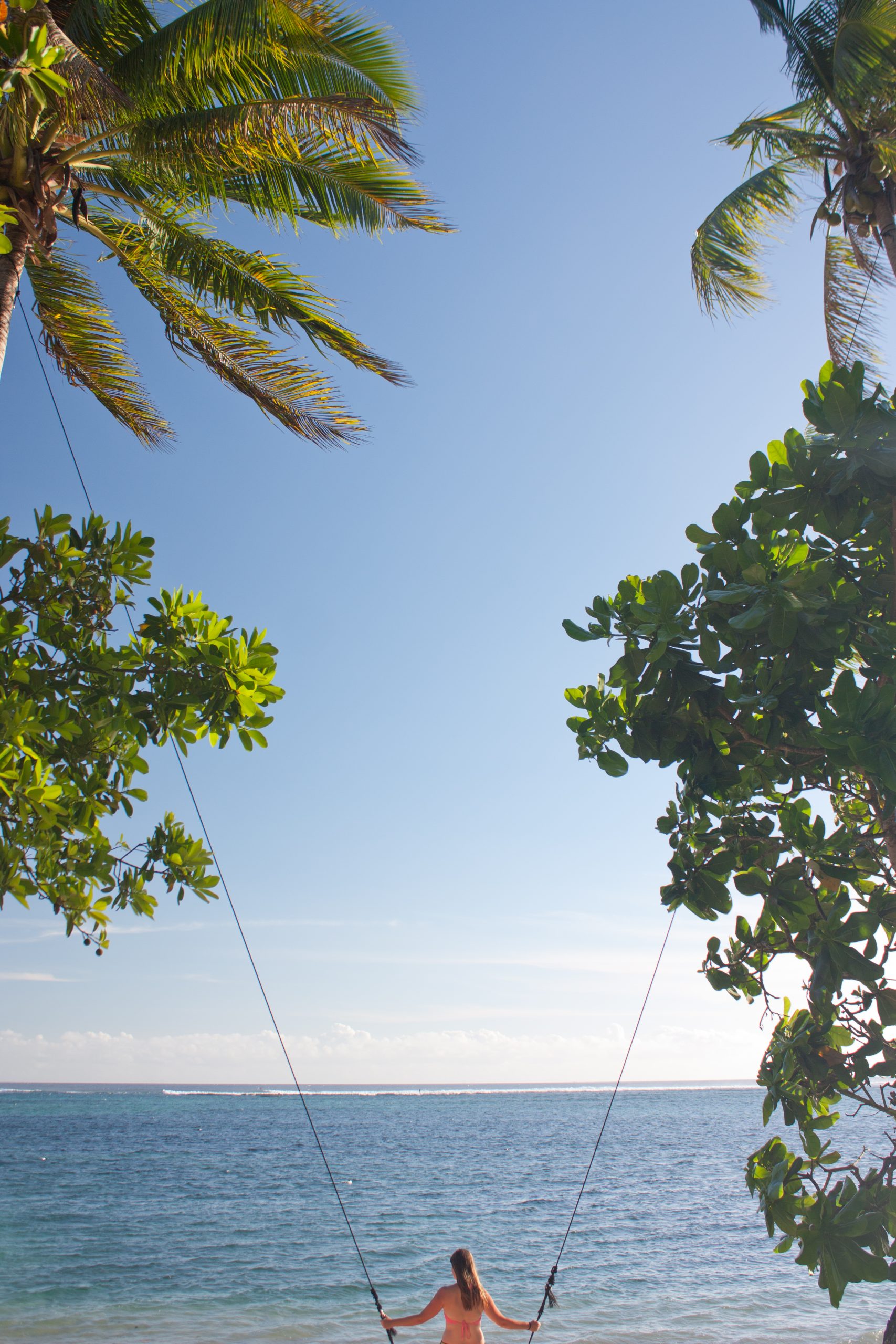
Mamanucas
The island group closest to Viti Levu on the Western side of the island is called Mamanucas. The maximum time needed to get there by boat from Denarau is one hour. If you want to enjoy a tropical island and don’t want to travel too much, this is a good choice. The hostels and hotels mentioned below are reasonably priced and rated. Prices start under USD 20/night for a bed in a shared dormitory and around USD 70/night for a double room.
Beachcomber Island Resort is a famous party resort on a tiny island. Mana Lagoon Backpackers is probably the cheapest low-cost option. Ratu Kini Backpackers and Dive Resort is also a cheap hostel at the island of Mana. Serenity Island Resort is a beautiful resort with great reviews. Prices start around USD 200/night in a double villa, though.
Yasawas
Yasawas are no short of accommodation options, however, most of it is quite pricey, and so if you’re on a budget we recommend that you do your research. Our tips for accommodation are below. The boat trip from Denarau takes anywhere from 2 to 5 hours.
Naqalia Lodge
We’ll start with what we know best. Naqalia Lodge is situated on one of the closest Yasawa Islands, Wayasewa. The resort is owned by a local Fijian family and many of the villagers from the island work in the Lodge. Because of that, the atmosphere is very homey and it makes you feel good to pay for the services to Fijians rather than Australian or American owners of other resorts.
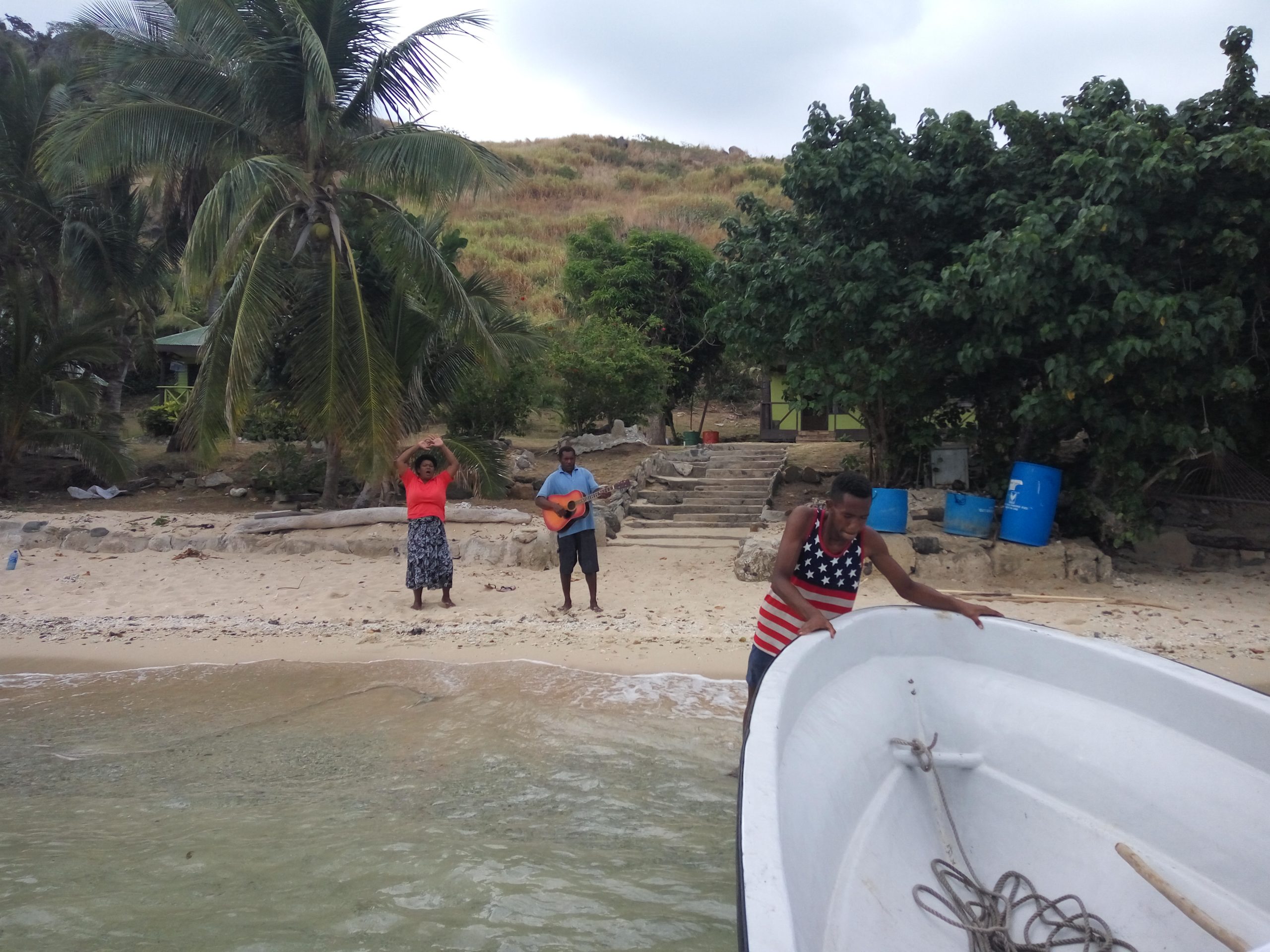
Naqalia Lodge offers several bungalows and one dorm-style shared room. We booked one of the bungalows with a veranda with a view at the garden and the sea. The bungalow was very spacious and we were absolutely satisfied with it. We paid for full board and were happy with the meals provided. There was always enough, often one could go for seconds, as well. There was also a small shop that operated during the day, and you could buy snacks and drinks from there. As we already mentioned, the atmosphere in the resort was very relaxed, some of the employees always welcomed the newly arrived guests and waved goodbye to them when they were leaving. During every lunch and dinner, the staff played and sang Fijian songs. We loved it.
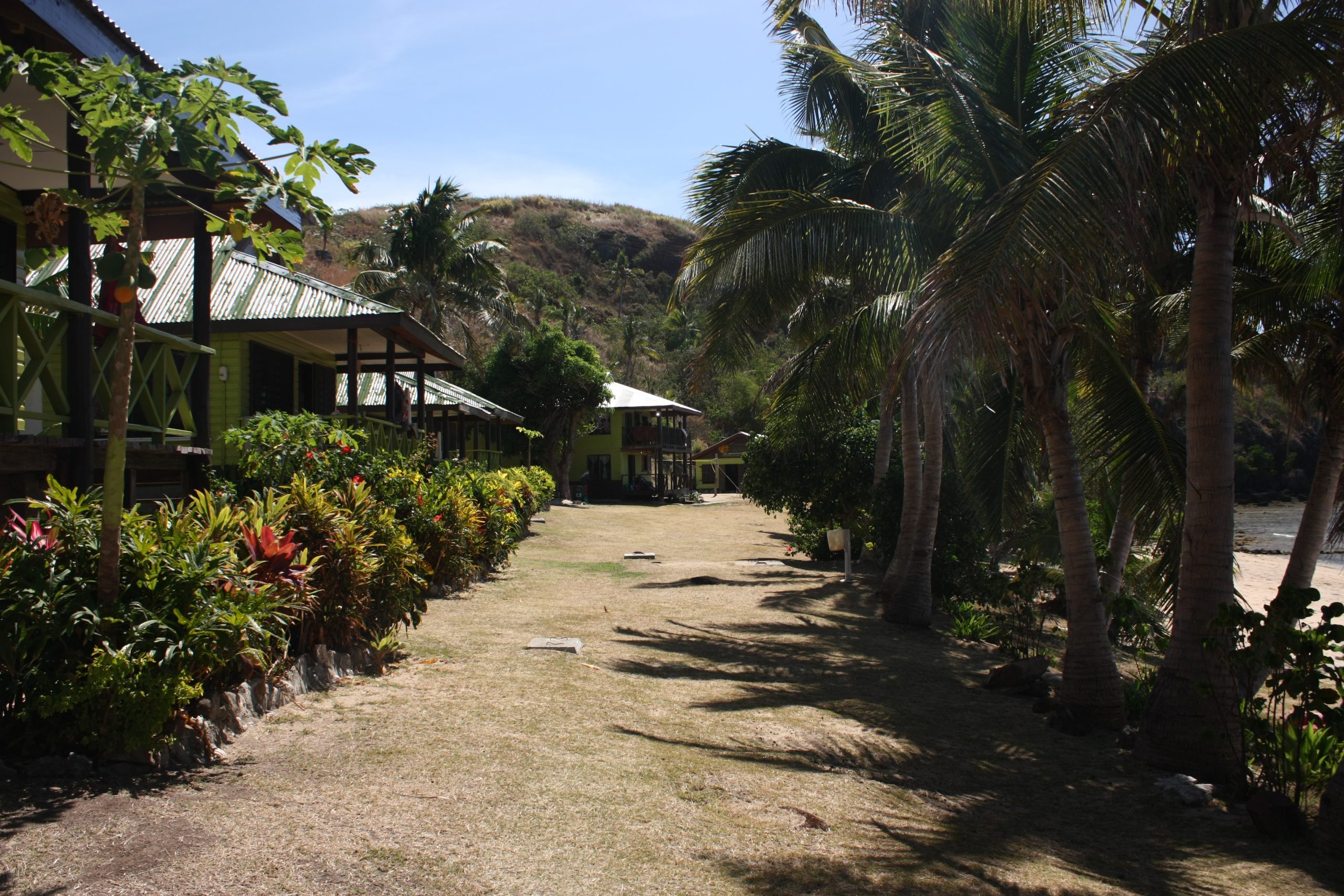
There were many activities offered by the resort, including making bracelets, spearfishing, visiting the local school, free snorkeling or swimming with small sharks. The conditions for snorkeling were really good in the area. The access to the sea from the beach wasn’t the greatest, as there were a lot of corals, so it was appreciated when you were taken for the snorkeling on a boat. Snorkeling with the small sharks was very exciting. One of the activities was a guided peak climb, however, this can be done without a guide, as the path is easy to find. It’s a short but demanding walk, definitely worth it, though. There was also a beach volleyball field. In the evenings you could attend kava nights.
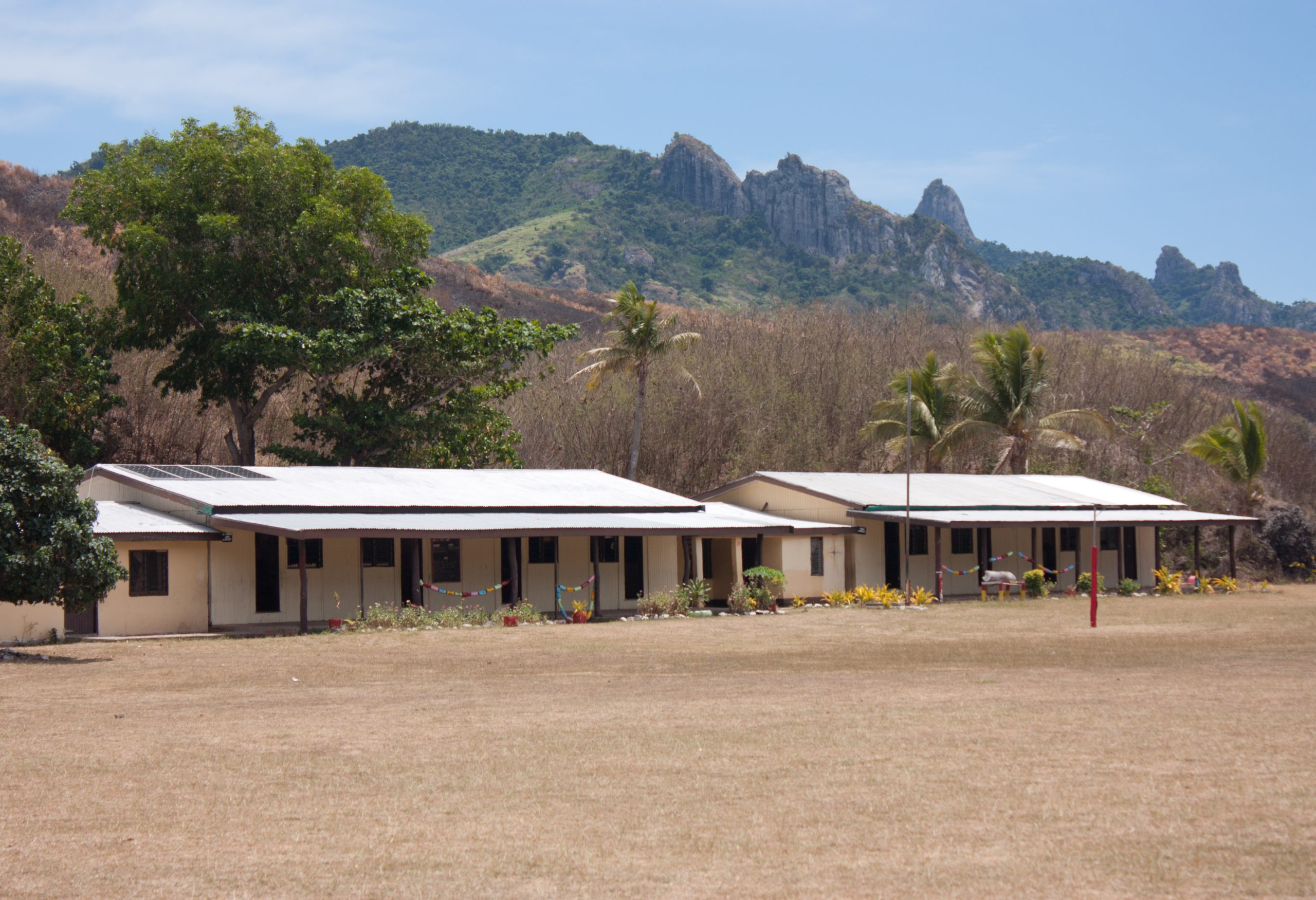
Naqalia Lodge is not for someone looking for parties and heavy drinking, but rather for someone who wants to relax in a hammock or on a beach or make use of the activities offered. Obviously, one of the biggest pluses of Naqalia Lodge is the price and the fact it is still pretty close to Denarau. On the other hand, what you’re getting back for the money is comparably more than enough.
Here are prices of some of the items in Naqalia Lodge:
1 night in a bungalow for two people – around USD 100
Swimming with sharks – 60FJD
Local school visit – 25 FJD
Big bottle of water – 6 FJD
Beer – 6 FJD
Biscuits – 4 FJD
If you want to drink more than a beer, it’s advisable to bring the alcohol from Viti Levu, as it is way more expensive at the islands.

The following resorts offer reasonably priced accommodation as well as good customer experience. Prices for a bed in a dorm start at around USD 30 and a night in a bungalow or a double room at around USD 100.
Barefoot Kuata Island Resort is a resort with very good ratings situated on a small island right next to the island where Naqalia Lodge is located. Mantaray Island Resort offers swimming with Manta Rays. Barefoot Manta Island Resort also offers swimming with Manta Rays. Boathouse Nanuya and Safe Landing Eco-Lodge can be found close to each other on the islands of Nanuya and Nacula.
Souvenirs
You might consider buying handmade souvenirs from the villagers or from such shops, where it’s pretty clear the person who made the product is getting paid properly. The product in a shop should have a label saying “Fijian made” as well. In Nadi, you’ll probably come across several shops that sell basically the same products, which are probably mass-produced and might not even originate in Fiji. We would try and avoid these. Some of the traditional Fijian products include ceramics, woven baskets and mats, tapa cloths or various wooden products, such as wooden masks. Considering the popularity and success of Fijian rugby team you’ll definitely have a chance to buy various rugby related souvenirs. You can start with the Fijian seven dollar note, which depicts the Olympic rugby success. Bula T-shirts are also some of the most popular souvenirs and are worn by many Fijians, as well. Those interested in fashion and jewelry should buy Fijian pearls or cosmetic products Pure Fiji. If you decide to buy a handmade souvenir, don’t forget to mention it at the airport when arriving in another country.

